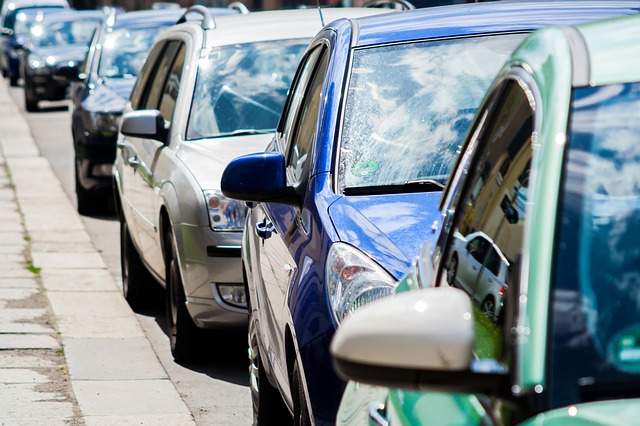
By Roamy Valera
In communities across the United States, municipal planners and local government leaders are focused on mobility. One of the defining elements of the quality of life in any community is the extent to which we can move about freely, easily, and safely in our urban environment. Today, on the cusp of the age of the smart city and self-driving vehicles, the future of mobility is taking shape.
Mobility is about providing efficient access to essential services, employment, and entertainment and recreational opportunities. For some, providing access means facilitating car travel; for some it means providing transit resources, as well as first- and last-mile service for transit users; and for some it means providing safe and convenient pedestrian access. The benefits of providing seamless mobility are enormous: more vibrant economic development, more sustainable communities, and a better quality of life for residents and visitors.
Parking is a critical element in the mobility picture and can make or break our ability to move around efficiently. An estimated 30 percent of traffic in urban areas is caused by drivers looking for parking. This article describes multiple approaches, with particular attention to the emergence of mobile parking technology.
Curb Management is the Key
When vehicles are constantly circling blocks looking for parking, they cause congestion on roadways and pose hazards for fellow drivers and pedestrians. When drivers double-park, they create similar hazards—and exacerbate congestion by blocking travel lanes. So where do we start?
Curb management begins with transportation demand management (TDM), a general term describing strategies designed to increase the overall efficiency of the transportation system, primarily by encouraging a shift away from single-occupant vehicle trips.
TDM strategies most commonly involve improving transit options, implementing a range of economic incentives, and developing smart-growth and land-use policies.
Strategies for improving transit options can include implementing public transit improvements, introducing or improving pedestrian infrastructure, promoting carpooling or other ride-sharing options, installing high-occupancy vehicle (HOV) priority lanes, improving taxi and ride-share services, and introducing guaranteed-ride-home and shared-bicycle services. The private sector can play an important role by implementing flextime and telecommuting policies.
Governments can also promote TDM through economic incentives that discourage driving, especially in congested areas, such as fuel tax increases, distance-based fees or tolls, and parking pricing, with higher rates in congested downtown areas and lower rates in more remote areas and around transit stations.
Next come a variety of smart-growth and land-use policies: transit-oriented development, location-efficient development, strategic parking management, car-free planning, traffic calming, and transport planning reforms.
A Renaissance in Parking Technology
Technology plays an essential role in curb management. The parking industry is in the midst of a technology renaissance that has seen the introduction of tools allowing drivers to pay for parking on mobile devices or even automatically by entering their payment credentials and vehicle information online before visiting the garage, ensuring “frictionless” entry and exit. Tools also collect and analyze utilization data to allow planners and parking facility owners to manage parking resources more effectively. When it comes to curb management, mobile parking technology is a game changer.
A vital element of mobility management, and subsequently curb management, is convenience. The more convenient it is for drivers to access parking, the more likely drivers are to follow the rules. And when it comes to convenience, connectivity is key.
Since the iPhone was launched in 2007, smartphones have become nearly ubiquitous. We use our smartphones every day, all day long, to shop; get directions; keep up with the news; communicate with family, colleagues, and friends; and complete a dozen other tasks that require connectivity.
It makes sense that connectivity would also play a vital role in transportation and parking. In fact, mobile technology can connect people to all elements of the parking and mobility experience. It gives people control over their route and transportation via GPS and mapping apps, and once the driver arrives at his or her destination, it provides the most convenient payment option.
Payment is considered a major “pain point” for drivers. In the age of connectivity, drivers want to park and pay quickly and simply. Mobile payment platforms allow drivers to pay with their cellphones, extend time remotely, and receive smart-parking reminders.
Technology synergies between infrastructure and mobile payment provide benefits for cities and towns by providing an “asset-right” solution with long-term benefits in terms of cost, longevity, and data that can be used to optimize rates.
Looking to the future, mobile payment technology will also be a key element of the success of smart cities and smart parking. Already several luxury vehicle brands are considering including mobile payment technology in their vehicles. With this technology, the cars themselves will be able to pay for parking once they’ve found a spot. It’s likely that it won’t be long before every car features this technology.
Parking technology already plays an essential role in curb management, and as current technologies are enhanced and new ones are introduced, it will play an even larger role. Ultimately, curb management improves mobility for all users, including drivers, pedestrians, and public transportation patrons.

New, Reduced Membership Dues
A new, reduced dues rate is available for CAOs/ACAOs, along with additional discounts for those in smaller communities, has been implemented. Learn more and be sure to join or renew today!
